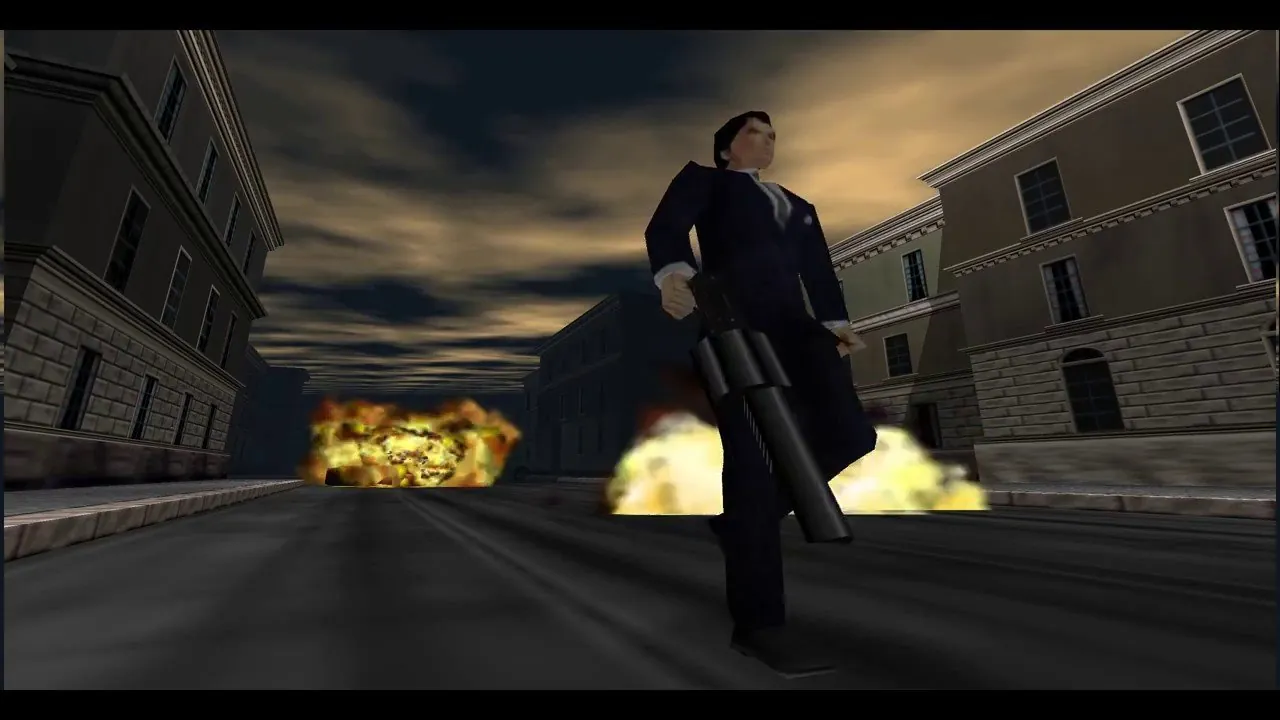Video Games Can't Afford to Look This Good
The gaming industry spent billions pursuing the idea that customers wanted realistic graphics. Did executives misread the market?
Dec. 26, 2024
One way to understand the video game industry's current crisis is by looking closely at Spider-Man's spandex.
For decades, companies like Sony and Microsoft have bet that realistic graphics were the key to attracting bigger audiences. By investing in technology, they have elevated flat pixelated worlds into experiences that often feel like stepping into a movie.
Designers of last year's Marvel's Spider-Man 2 used the processing power of the PlayStation 5 so Peter Parker's outfits would be rendered with realistic textures and skyscraper windows could reflect rays of sunlight.
That level of detail did not come cheap.
Insomniac Games, which is owned by Sony, spent about $300 million to develop Spider-Man 2, according to leaked documents, more than triple the budget of the first game in the series, which was released five years earlier. Chasing Hollywood realism requires Hollywood budgets, and even though Spider-Man 2 sold more than 11 million copies, several members of Insomniac lost their jobs when Sony announced 900 layoffs in February.
Cinematic games are getting so expensive and time-consuming to make that the video game industry has started to acknowledge that investing in graphics is providing diminished financial returns.
"It's very clear that high-fidelity visuals are only moving the needle for a vocal class of g*mers in their 40s and 50s," said Jacob Navok, a former executive at Square Enix who left that studio, known for the Final Fantasy series, in 2016 to start his own media company. "But what does my 7-year-old son play? Minecraft. Roblox. Fortnite."
Joost van Dreunen, a market analyst and professor at New York University, said it was clear what younger generations value in their video games: "Playing is an excuse for hanging out with other people."
When millions are happy to play old games with outdated graphics — including Roblox (2006), Minecraft (2009) and Fortnite (2017) — it creates challenges for studios that make blockbuster single-player titles. The industry's audience has slightly shrunk for the first time in decades. Studios are rapidly closing and sweeping layoffs have affected more than 20,000 employees in the past two years, including more than 2,500 Microsoft workers.
Many video game developers built their careers during an era that glorified graphical fidelity. They marveled at a scene from The Last of Us: Part II in which Ellie, the protagonist, removes a shirt over her head to reveal bruises and scrapes on her back without any technical glitches.
But a few years later, costly graphical upgrades are often barely noticeable.
When the studio Naughty Dog released a remastered version of The Last of Us: Part II this year, light bounced off lakes and puddles with a more realistic shimmer. In a November ad for the PlayStation 5 Pro, an enhanced version of the Sony console that retails for almost $700, the billboards in Spider-Man 2's Manhattan featured crisper letters.
Optimizing cinematic games for a narrow group of consumers who have spent hundreds of dollars on a console or computer may no longer make financial sense. Studios are increasingly prioritizing games with basic graphics that can be played on the smartphones already in everyone's pocket.
"They essentially run on toasters," said Matthew Ball, an entrepreneur and video game analyst, talking about games like Roblox and League of Legends. "The developers aren't chasing graphics but the social connections that players have built over time."
Going Hollywood
Developers had long taught players to equate realism with excellence, but this new toaster generation of g*mers is upsetting industry orthodoxies. The developer behind Animal Well, which received extensive praise this year, said the game's file size was smaller than many of the screenshots used to promote it.
A company like Nintendo was once the exception that proved the rule, telling its audiences over the past 40 years that graphics were not a priority.
That strategy had shown weaknesses through the 1990s and 2000s, when the Nintendo 64 and GameCube had weaker visuals and sold fewer copies than Sony consoles. But now the tables have turned. Industry figures joke about how a cartoony game like Luigi's Mansion 3 on the Nintendo Switch considerably outsells gorgeous cinematic narratives on the PlayStation 5 like Final Fantasy VII Rebirth.








Jump in the discussion.
No email address required.
That is not what "exception that proved the rule" means. NYT editors are incompetent.
That phrase means a posted/described exception makes the rule clear in inverse. "No parking before 5pm" implies that parking is allowed after 5pm. The exception to allowed parking proves the rule that parking is otherwise okay.
The exception never proves a rule that matches the exception itself. The "exception" is to the rule.
Jump in the discussion.
No email address required.
I like this interpretation that makes it a complete nonsense phrase nobody would use correctly on purpose.
The more common usage, where an example succeeds without following the rule and demonstrates how rare it is that the rule is safely broken, doesn't really need an idiom anyway.
Jump in the discussion.
No email address required.
It does need an idiom. The problem is that if you say "all Xes are Y" then cute twinks will come out of the woodwork to say "but what about Z??". So you say "Z is the exception that proves the rule" to shut them up.
Jump in the discussion.
No email address required.
!slots100
Jump in the discussion.
No email address required.
!slots150
Jump in the discussion.
No email address required.
More options
Context
More options
Context
More options
Context
More options
Context
I think he's using it correctly: Nintendo games are the exception to the industry "rule" that AAA flagshit games must come with ever more realistic graphics.
Jump in the discussion.
No email address required.
That exception hardly proves that rule, and it would be inaccurate usage even if it did.
An exception proving the rule for graphics would be something like, "Never have a cutscene longer than 3 minutes." That would "prove" a rule that up to 3 minutes is considered an acceptable duration.
It's a rather technical phrase to use, and many people use it casually but incorrectly. A NYT editor ought to know better.
The NYT usage has no leg to stand on:
https://en.wikipedia.org/wiki/Exception_that_proves_the_rule
Jump in the discussion.
No email address required.
"The exception that proves the rule" is a saying whose meaning is contested. Henry Watson Fowler's Modern English Usage identifies five ways in which the phrase has been used,[1] and each use makes some sort of reference to the role that a particular case or event takes in relation to a more general rule.
Jump in the discussion.
No email address required.
In all of those cases, the exception indicates or validates the rule. Nintendo bucking industry "rules" did not prove those same rules; it showed that the rule was bunk.
In this case, the exception proved the exception, but that's a stupid phrase to ever use.
I think the usage the NYT is going for is something like "an exception proved to be the actual rule," but that's the opposite of the normal meaning.
Jump in the discussion.
No email address required.
... but the rule is not bunk?
It really is the case (I guess, I only play Wordle and Candy Crush) that AAA games got fancier and fancier more realistic graphics every generation.
It seems like you're objecting that Nintendo's counterexample shows other studios could also have gotten away with violating this "rule" - but that seems irrelevant to the usage of the idiom.
If all the girls at my school wear makeup, but Maggie is "the exception that proves the rule, she's the only one who dares to come to class bare-faced" it doesn't matter that maybe all the other girls could have done the same.
The rule exists as matter of convention, and the exception "proves" the rule - calling attention to it by contravention.
Jump in the discussion.
No email address required.
The "rule" here is that more realistic graphics are worth the investment because they drive game sales. Nintendo has shown that the rule doesn't actually hold.
I'm willing to use any of the common meanings of the idiom here, but the NYT usage fails them all.
The two most common ones would be:
The exception defines the rule (most traditional/common usage). This clearly isn't the case here.
The exception demonstrates the value of the rule. If Nintendo had poor sales from their unrealistic graphics, it would prove the rule in this way.
It's the only thing that matters for this idiom. "The exception that proves the rule" proves the rule, not the exception. Nintendo proved that the rule was incorrect, not that the rule was valid. The NYT usage is the opposite of the commonly held meanings for the idiom.
But what rule is Maggie proving here? I'd anything, Maggie is showing that there is no functional rule about coming to school with makeup. She is not an exception proving the rule.
If Maggie experienced social rejection, she would "prove the rule" in the sense of "demonstrating the value of it."
In no case does "the exception proved the rule" mean that the exception proved to actually be the rule. That's just inconsistent with established usage.
Jump in the discussion.
No email address required.
That is the case here: Nintendo's exception highlights ("proves") the general rule that games keep getting better and better graphics.
Jump in the discussion.
No email address required.
That's not the rule being discussed, though. The rule being discussed is "photorealistic graphics drive sales enough to be worth the expense," and Nintendo has proved that false.
Nintendo isn't even an exception to your framing of the rule. It's not like their graphics aren't getting better over time.
Jump in the discussion.
No email address required.
More options
Context
More options
Context
More options
Context
More options
Context
More options
Context
More options
Context
More options
Context
!dramatards we have a live in-house slapfight Featuring two r-slurs who can't be wrong, it's minor and nitpicky in the best possible way
Featuring two r-slurs who can't be wrong, it's minor and nitpicky in the best possible way 
Jump in the discussion.
No email address required.
More options
Context
More options
Context
Read a news article before 1970 lol journoids used latin and five-syllable words and there was some art in their sentences.
Heck, go out of your way to read Peepeeens or Stephen Crane or a translation of Dostoyevsky's news articles: they weren't even the best at what they did, when they'd playact journoid.
Nowadays, even NYT editors are subliterates pushing out articles about the latest vbuck free-weekend in the Roblocknite Simulator 2020 vidyer game system smdh
Jump in the discussion.
No email address required.
More options
Context
More options
Context